Compressor
Audio compression is used to reduce higher signal parts above a certain threshold while the signal below the threshold remains un-effected. with a good compression music sound more compact and louder. With compression used for speech distortion can be avoided easily by diminishing loud sections or loud voices in total.
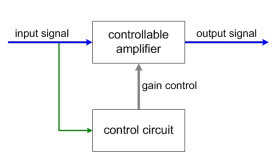 |
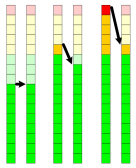 |
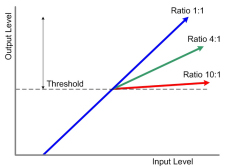 |
| control circuit | level compression above threshold (center and right) |
compression ratios |
To avoid a too sharp and audible changing the knee of the ratio curve (see above) can be set as a 'rounded' knee. This is common in more sophisticated compressor designs.
The threshold is the level from which a level reduction will be executed. Threshold is set in dB, counted from full level downwards. With a threshold of -20dB level reduction starts at -20dB input signal, with a threshold of -40dB level reduction starts at -40dB input signal.
The ratio defines the ratio between output and input signal (above threshold). A ratio of 1:10 means and output of 1dB for an input of 10dB (always only above threshold).
The attack time is the time until the level eduction will be activated. A higher attack time let music sound more lively, there as a too short attack time lets music sound dull and dead. A good start is 50 msec.
The release time is the time until the control goes back to an uncompressed state. Also the release time should not be set too short.
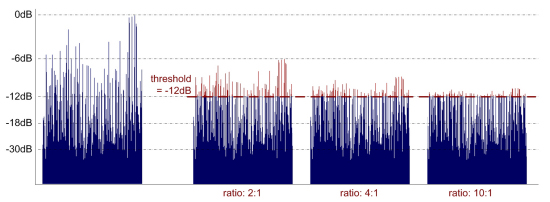 |
| uncompressed signal and compressed signal 2:1, 4:1, 10:1 (signal below theshold is un-effected!) |
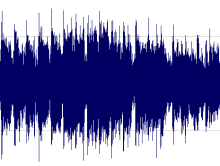 |
 |
 |
| Rolling Stones Time is on my Side, 1964 |
Norah Jones Sunrise, 2004 |
highly compressed Metallica, My Apocalypse, 2008 |